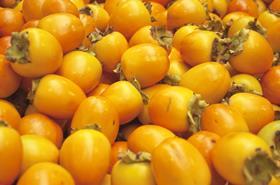
Spanish kaki volumes are expected to increase by 20 per cent this season to 300,000 tonnes. Anecoop, whose members account for 43 per cent of national production, describes the new crop as “spectacular” said recent rains had benefited quality and sizing.
Approximately half of the crop is earmarked for export, the bulk of this going to EU markets including Germany, France and Italy.
With output forecast to reach 500,000 tonnes by 2020, commercial director Paco Borrás warns that Europe is facing “a tsunami of kaki” in the coming years and that promotions will have to be ramped up if the market is to absorb this volume.
“We still have a long way to go before kakis realise their full potential. Marketing is the key to unlocking consumer demand,” he said.
Per capita consumption in Spain currently stands at 1kg, compared with 400-500g in Germany and just 200g in France.
The Kaki Ribera del Xúquer denomination of origin is the main body tasked with promoting the fruit, but Anecoop also carries out its own campaigns in key markets such as the Czech Republic. Beyond Europe, Anecoop sees strong potential to develop sales in Asia and Canada.
Over the past decade kaki has gone from being a relatively unknown exotic fruit to one that supermarkets and many shoppers look forward to every year. The season is relatively short, however, with fruit generally only available between October and the end of January.
Cirilio Arnandis, director of Kaki de Ribera del Xúquer, said work is underway to extend the season by prolonging shelf life.
“Kaki is generally regarded as an autumn fruit, but soon we hope to extend its availability to five rather than four months,” he said.



